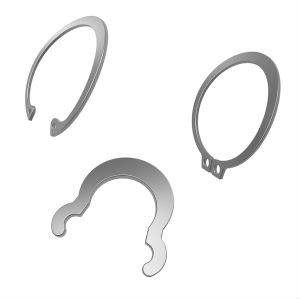 Daemar’s expert advice on retaining-ring selection that can save money
Daemar’s expert advice on retaining-ring selection that can save money
October 8, 2020 REDWIRE is news you can use from leading suppliers. Powered by FRASERS.
Posted by Daemar Inc.
Daemar manages the sourcing and delivery of millions of Essential Components to the manufacturing and MRO marketplace. I... Read more
Subscribe
Free REDWIRE e-newsletter

Retaining rings are a large part of Daemar's inventory.
Essential components for industry: this is the specialty of Daemar Inc., a premier Canadian industrial supplier. The company is aware that customers can lower their fastener-assembly expenses through wise retaining-ring selection. They can save plenty of money if they replace pricey traditional fasteners with retaining rings – which can also handle a variety of non-traditional tasks. Last year, the Daemar team published a blog entry that outlined the six main steps of choosing retaining rings for significant cost savings.
Picking the right installation tool
The first step in selecting retaining rings is to determine the ring type. For example, axial rings are necessary for retaining assemblies in housings/bores. If the assembly is on a shaft, then a radial ring is required. A bowed or beveled ring is the answer if the application needs a retaining ring to act as a spring or pre-load on parts to decrease chatter or vibration. And a self-locking ring is ideal if the assembly has a minimal thrust load.
Installation considerations come next in retaining-ring selection. How the ring is installed affects the kind of ring used. Installation along the axis or centre point of a shaft/housing necessitates an axial ring, while a radial ring is required for installation along a circle radius.
Step three: determination of ring size. The required size depends on the diameter of the housing or shaft. Retaining rings are produced according to Inch, DIN, and ANSI Metric standards. The fourth step is selection of the proper ring material for the application; options include stainless or carbon steel and beryllium copper. Next comes selecting the right finish, with such possibilities as different kinds of zinc, phosphate, or trivalent.
The last step of retaining-ring selection is choosing the correct installation tool for the assembly. Rotor Clip retaining rings from Daemar can be installed with many manual and automatic tools; pliers and pneumatic tools work for axial rings, while dispensers and applicators are more suitable for radial rings. Using fingers, hammers, or makeshift devices can increase injury risk or damage the application.
Following these steps saves money substantially.
To learn more, contact Daemar.
Share
Posted by Daemar Inc.
Daemar manages the sourcing and delivery of millions of Essential Components to the manufacturing and MRO marketplace. I... Read more
